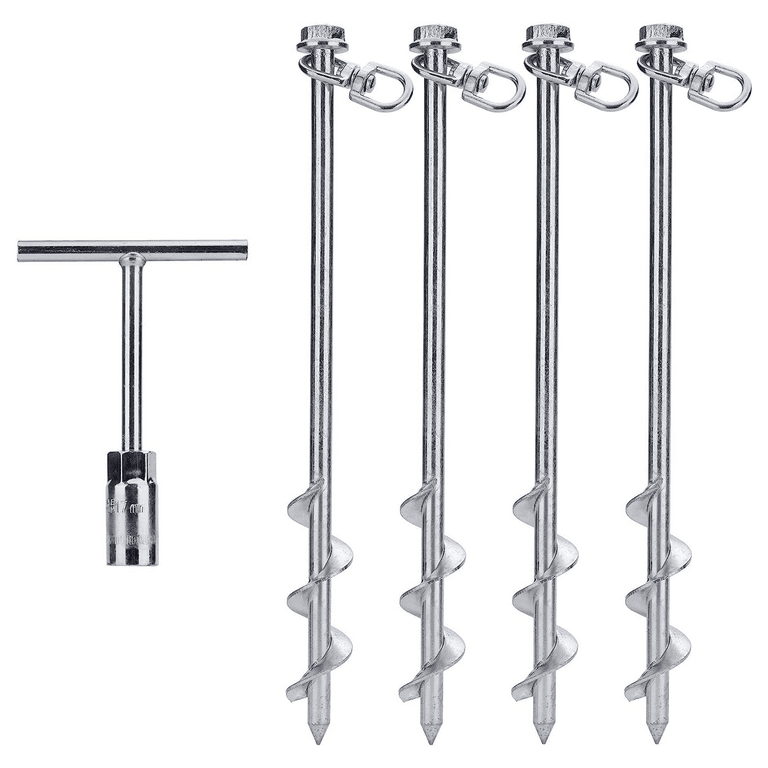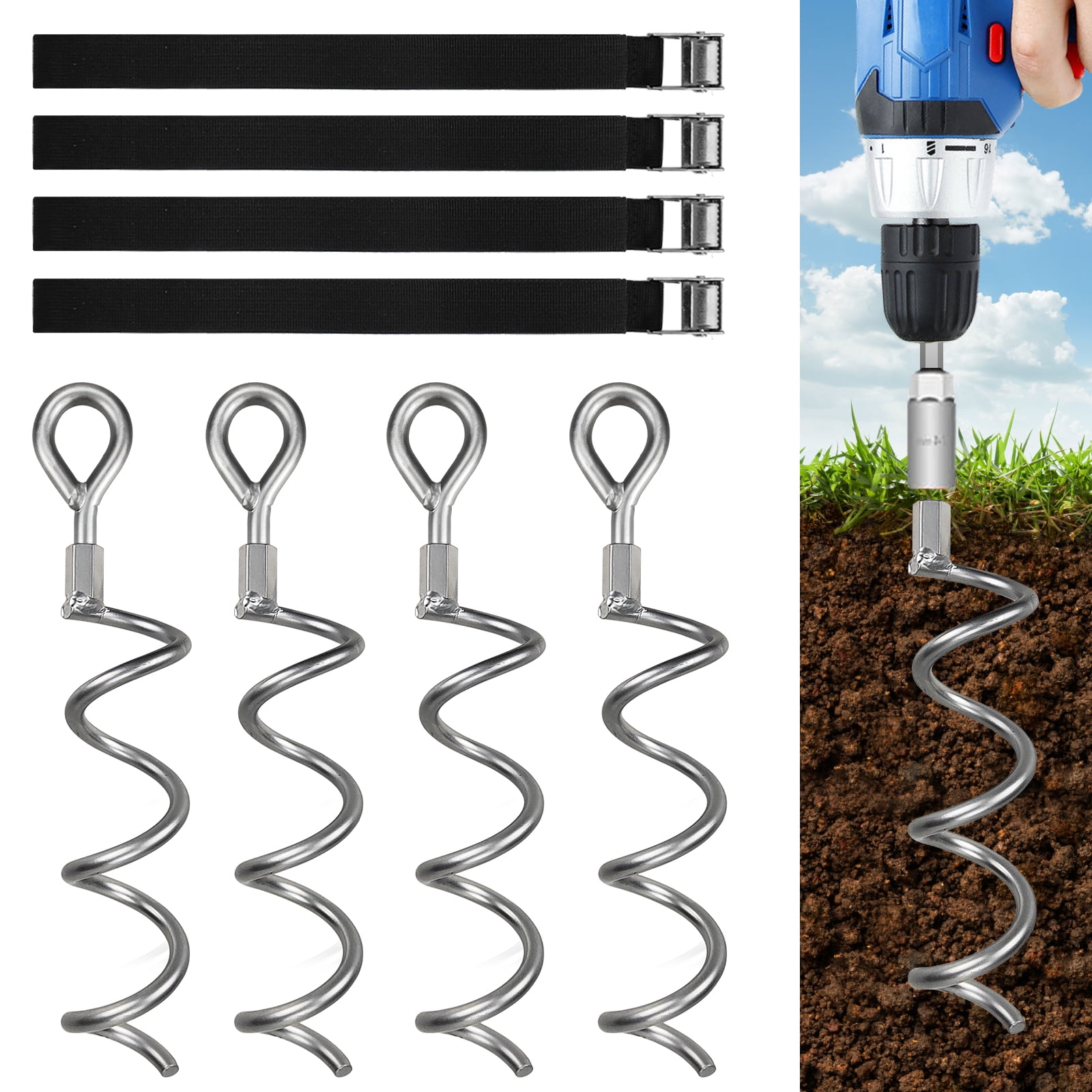Ways to Pick the Best Ground Anchor for Versatile Use
Ways to Pick the Best Ground Anchor for Versatile Use
Blog Article
Explore the Different Types of Ground Support for Your Following Project
From auger supports, which stand out in diverse soil problems, to risk supports made for momentary installations, the options are many. In addition, concrete and screw anchors present unique advantages in details situations, while deadman supports are customized for applications needing resistance to side forces.

Auger Anchors
Auger anchors are a popular option in different building and landscape design tasks due to their one-of-a-kind layout and effective anchoring capacities. These supports include a helical screw-like shaft that is driven right into the ground, enabling a safe and secure and secure hold. The spiral style assists in easy setup and optimizes resistance versus side pressures, making auger supports specifically reliable in applications such as fencing, short-lived structures, and disintegration control.
The setup procedure of auger anchors is reasonably straightforward. They can be manually or mechanically installed, depending on the dimension and called for deepness. This flexibility enables for their use in diverse dirt problems, from sandy to clayey terrains. Auger anchors can be quickly gotten rid of and recycled, which adds to their cost-effectiveness and sustainability.
Among the substantial advantages of auger supports is their capacity to distribute lots equally throughout the surrounding soil, minimizing the risk of dirt disturbance and reducing ecological effect. Furthermore, they are much less susceptible to loosening up or heaving gradually compared to traditional anchoring approaches. Auger anchors are an excellent option for jobs calling for trustworthy and sturdy anchoring options.

Stake Anchors
When it involves safeguarding frameworks in a selection of outside applications, risk supports supply a reliable and uncomplicated solution. These supports are usually constructed from long lasting products such as steel or light weight aluminum, made to endure environmental tensions while providing optimal security. Their straightforward layout enables fast setup, making them a suitable selection for short-lived or permanent anchoring needs.
Stake anchors are specifically helpful in protecting camping tents, canopies, and other light-weight frameworks versus wind and weather condition. They work by being driven into the ground at an angle, creating a solid hold that withstands pull-out pressures - Ground Anchor. The performance of risk anchors relies on numerous elements, consisting of soil kind, moisture content, and the angle of installation
For included security, many risk supports come with add-on points for straps or ropes, enabling stress modifications as necessary. In applications such as landscaping or building and construction, they can effectively support equipment or structures on uneven terrain. On the whole, risk anchors give a cost-efficient and flexible option for safeguarding numerous exterior installments, making them a preferred choice for specialists and DIY fanatics alike.
Concrete Anchors
Concrete supports supply a robust solution for protecting frameworks to concrete surface areas, making sure security and security in various applications. These anchors are vital for projects varying from property building and constructions to massive commercial setups. They can be found in various types, including development anchors, sticky supports, and undercut anchors, each designed for certain tons needs and environmental conditions.
When installed,Growth anchors count on mechanical mechanisms to hold the concrete. They are suitable for tool to sturdy applications. Sticky supports utilize high-strength epoxy or material to bond the support to the concrete, offering remarkable load-bearing capabilities, specifically in broken concrete situations. Undercut supports develop an one-of-a-kind form within the concrete, offering outstanding holding power, particularly in applications where tensile lots are common.
When performed properly, concrete anchors dramatically improve the architectural stability of numerous projects, making them crucial in modern building methods. Recognizing the certain demands of your task will assist in selecting the appropriate type of concrete support for the job.
Screw Anchors

Screw supports are a flexible attaching solution that can be properly used in a selection of applications where standard concrete supports might not be sufficient. These supports consist of a helical style that allows them to be quickly driven into the ground, making them suitable anchor for usage in dirt and other substrates. Their special structure gives excellent holding power and resistance to pull-out forces, making them suitable for various tasks, from landscape design to structural assistance.
One of the primary benefits of screw supports is their ease of installment. They need minimal equipment and can frequently be mounted without the need for excavation, which conserves both time and labor expenses. In addition, screw supports can be eliminated and recycled, using a sustainable service for momentary applications.
Screw supports are particularly helpful in areas where soil problems are testing, such as loosened or sandy dirts. Their ability to be set up at differing depths allows for modification based upon certain job demands. In general, screw supports provide a reputable and reliable securing approach, making them an outstanding option for service providers and designers seeking effective remedies for their projects.
Deadman Anchors
Deadman supports work as a durable service for maintaining structures in tough conditions, specifically where traditional anchoring approaches may fail. These anchors contain large, heavy objects hidden underground, you could try these out which create resistance versus lateral forces. The design usually entails a horizontal element, such as a block of concrete or a steel plate, buried in the dirt, to which straps or cords are affixed.
The efficiency of deadman supports depends on their ability to disperse loads over a larger location, minimizing the danger of failing in unsteady soil conditions. They are especially valuable in applications such as preserving wall surfaces, short-term structures, and incline stablizing, where dirt activity can endanger the honesty of the structure.
Installation of deadman anchors requires mindful preparation to guarantee they are put at the right deepness and orientation, optimizing their load-bearing capacity. While they might require more labor and material than light-weight supports, their reliability in unfavorable problems makes them invaluable for long-term projects. Deadman supports are functional and can be adapted to various applications, making them a go-to choice for engineers facing one-of-a-kind obstacles in their jobs.
Final Thought
In summary, selecting the suitable type of ground anchor is crucial for making certain stability and safety in different jobs. Auger supports master diverse soil problems, while stake anchors suit short-term applications. For concrete surfaces, expansion and adhesive anchors offer trustworthy options, and screw anchors supply versatility in challenging terrains. Deadman anchors are especially effective in withstanding side pressures for retaining wall surfaces. Careful factor to consider of these choices will enhance job outcomes and architectural integrity.
Additionally, concrete and screw anchors existing unique benefits in specific scenarios, while deadman anchors are customized for applications needing resistance to lateral pressures - Ground Anchor.Auger anchors are a preferred choice in various building and construction and landscape design projects due to their distinct style and effective anchoring capacities. They come in different types, consisting of development anchors, sticky anchors, and undercut supports, each created for particular load requirements and ecological conditions
Glue anchors use high-strength epoxy or resin to bond the support to the concrete, providing remarkable load-bearing capabilities, especially in fractured concrete circumstances. Generally, screw anchors offer a dependable and reliable securing method, making them an exceptional option for visite site engineers and professionals looking for reliable services for their tasks.
Report this page